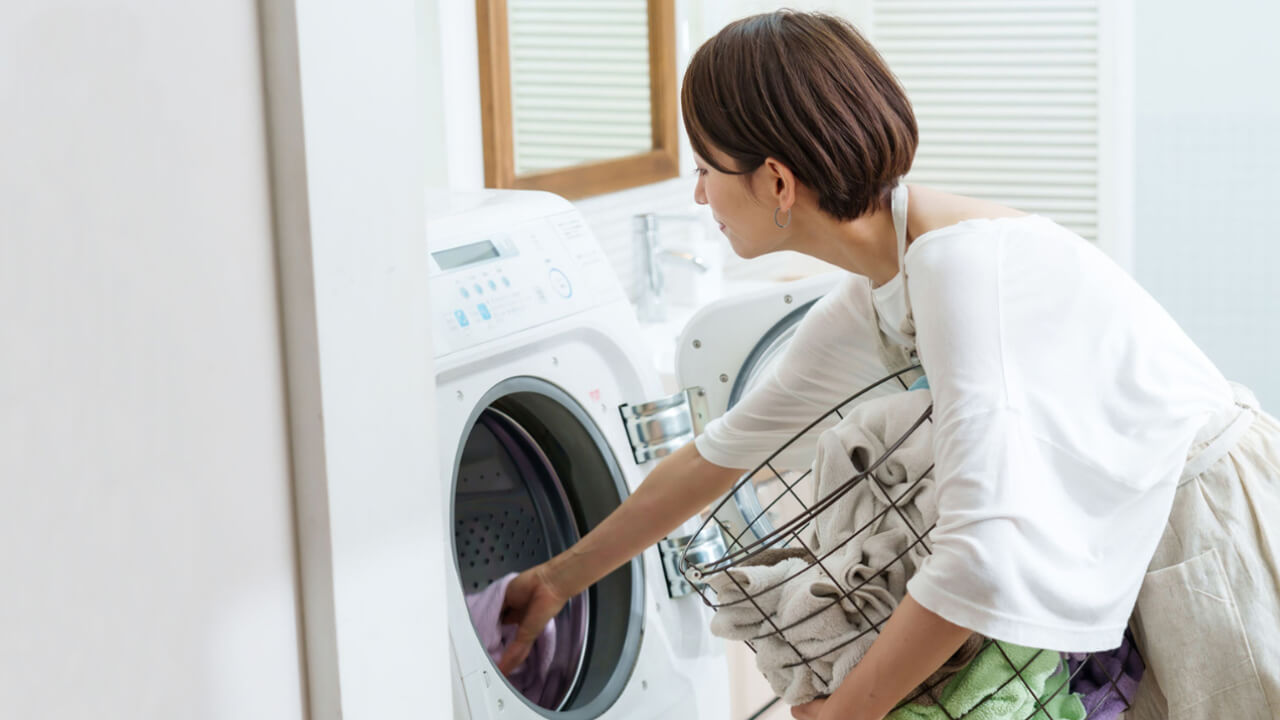
There are many things I don't understand regarding the washing machine space in a rental property. With the increasing popularity of drum-type washing machines, the size of the washing machine space has become one of the important points to consider when searching for a property. In this article, we summarize the types and sizes of washing machine space and the waterproof tray for washing machines whose purpose may not be clear, and points to be mindful of during property viewings. We hope this will assist you in making your new living arrangements more comfortable.
First, let's summarize the types and sizes of washing machine space in rental properties. Depending on the type of washing machine, there may be cases where you don't need to be overly concerned, but there are also cases where precise measurements are necessary, so caution is required.
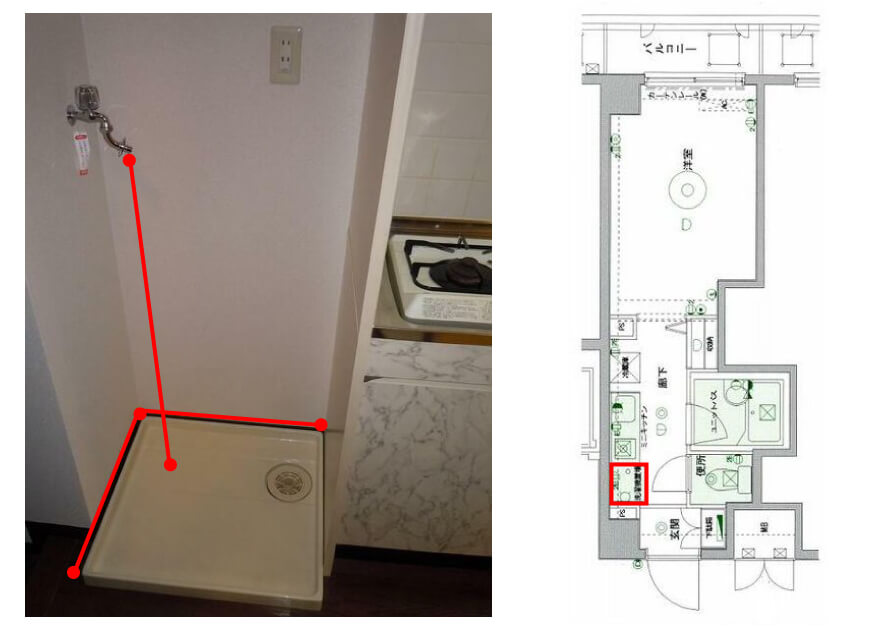
Most one-room/1K types without a laundry area have a washing machine space next to the kitchen surrounded by walls on both sides. In this type, the width is limited, requiring attention when purchasing or moving in a washing machine. Additionally, the height to the water supply inlet is often installed in a tight space, so caution is needed regarding height.
For this type of washing machine space, waterproof tray with dimensions of 640mm x 640mm (internal dimensions 586mm x 586mm) are common, and due to height constraints, it's often challenging to accommodate drum-type washing machines, requiring careful consideration.
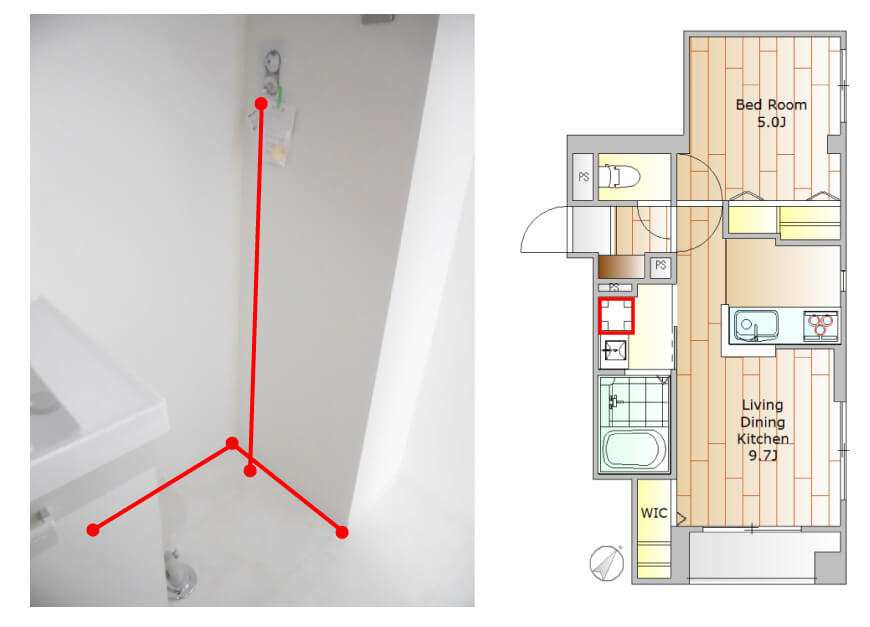
Most properties with a laundry area have a washing machine space next to the Sink. In this case, due to constraints imposed by the width of the sink and the wall, meticulous measurements of the width should be made. It's common for this space to be around 600mm wide, which may not accommodate a drum-type washing machine. Regarding height, since the water supply inlet is typically wall-mounted, there's usually no need for concern.
However, there's no waterproof tray installed in this washing machine space. You might feel concerned about this, but since a hose called an “elbow” is installed in the drainage outlet, there are generally no issues. However, depending on the washing machine, you may need to install a stand for raising height(Washer Riser Platform), so be cautious.
External link: Amazon Washer Riser Platform

In cases where the washing machine space is located within storage, the width and depth of the storage, along with the size of the waterproof tray, become important. Furthermore, since there are doors to the storage, if the depth exceeds a certain limit, the doors may not close properly. Additionally, the width may be constrained during installation due to the doors not fully opening.
Since this type of waterproof tray in this photo has high legs and is fixed, allowing only washing machines that fit within its dimensions to be placed. While the external dimensions are 640mm x 640mm, considering that washing machines typically require space between them and the wall, the waterproof tray being attached to the left wall may impose constraints. Although there's ample space width-wise within the storage, considering the interaction with the waterproof tray, so be cautious.
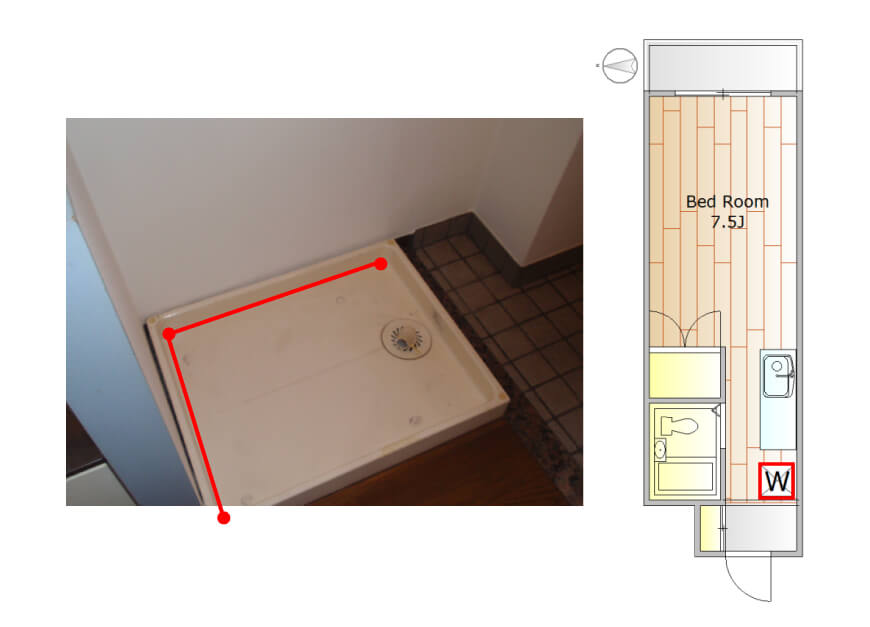
If there's ample width available, you can usually place a washing machine without many constraints. By measuring the internal dimensions of the washing machine space and being mindful of the height of the water supply inlet, you should be able to install the washing machine without issues. If additional height is required when connecting the hose to the elbow, consider installing a stand for raising height (Washer Riser Platform).
External link: Amazon Washer Riser Platform
We've discussed the types of washing machine space, and we noticed that some properties have Waterproof tray while others don't. But what exactly is the role of a Waterproof tray?
The waterproof tray serves three main purposes:
① Preventing leaks and condensation
As the name suggests, the primary role of a waterproof tray is waterproofing. Even in cases of minor leaks or condensation dripping, having a it can prevent floor corrosion. However, it cannot contain massive water leaks overflowing from the waterproof tray.
② Reducing washing machine vibration and noise
Washing machines can generate significant vibrations during operation. If a washing machine is directly placed on the floor, these vibrations may resonate through the floor to the lower levels. Placing a waterproof tray can absorb vibrations, reducing shaking and noise.
③ Facilitating cleaning and maintenance between the washing machine and the floor
Depending on the type, placing a waterproof tray can make it easier to clean and maintain the space between the washing machine and the floor. Particularly with riser-type pans, cleaning becomes more manageable, and connecting to the drainage outlet or elbow becomes easier.
There are standard specifications for the size of washing machine waterproof trays, and they generally come in three types. Let's review their characteristics:
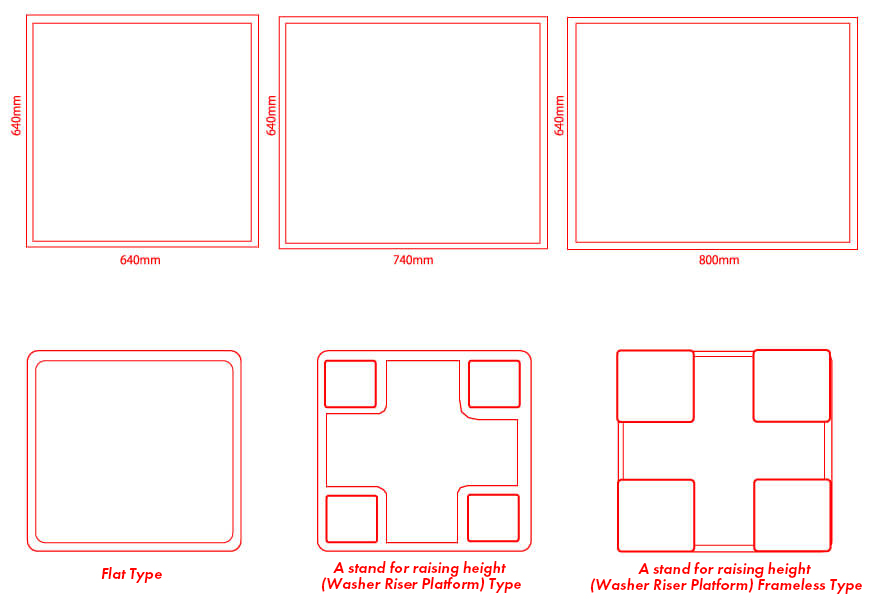
① Standard dimensions of waterproof trays
The waterproof trays come in three standard dimensions: (a) 640mm × 640mm, (b) 740mm × 640mm, and (c) 800mm × 640mm.
② Types of waterproof trays
The waterproof trays come in three types: (a) Flat Type, (b) Riser Type, and (c) Riser Frameless Type.
(a) Flat Type
The flat type is a conventional waterproof tray with a reservoir for collecting leaks. It emphasizes preventing water leaks, allowing compatibility with various washing machine types. However, its lack of space between the washing machine and the floor may make cleaning difficult.
(b) A stand for raising height (Washer Riser Platform) Type
Riser-type pans have elevated corners and a depressed center, making them easier to clean. They offer better cleaning accessibility than flat types. However, due to the elevation, they may affect the height to the water supply inlet, requiring attention.
(c) A stand for raising height (Washer Riser Platform) Frameless Type
The riser frameless type has elevated corners without a frame (or with a low frame), making it the easiest to clean. Additionally, its lack of a frame allows for placement in tight spaces or provides flexibility in width, minimizing the impact of the waterproof tray when accommodating drum-type washing machines.
Let's explain the points to consider when measuring washing machine space in rental properties.
Firstly, it's essential to grasp the dimensions of your washing machine. If you're bringing your existing machine, consult the manual for its size. If you've lost the manual, you might find the information on the manufacturer's website by searching for the model number.
For those purchasing a new machine, understand the approximate dimensions based on the type of washing machine.
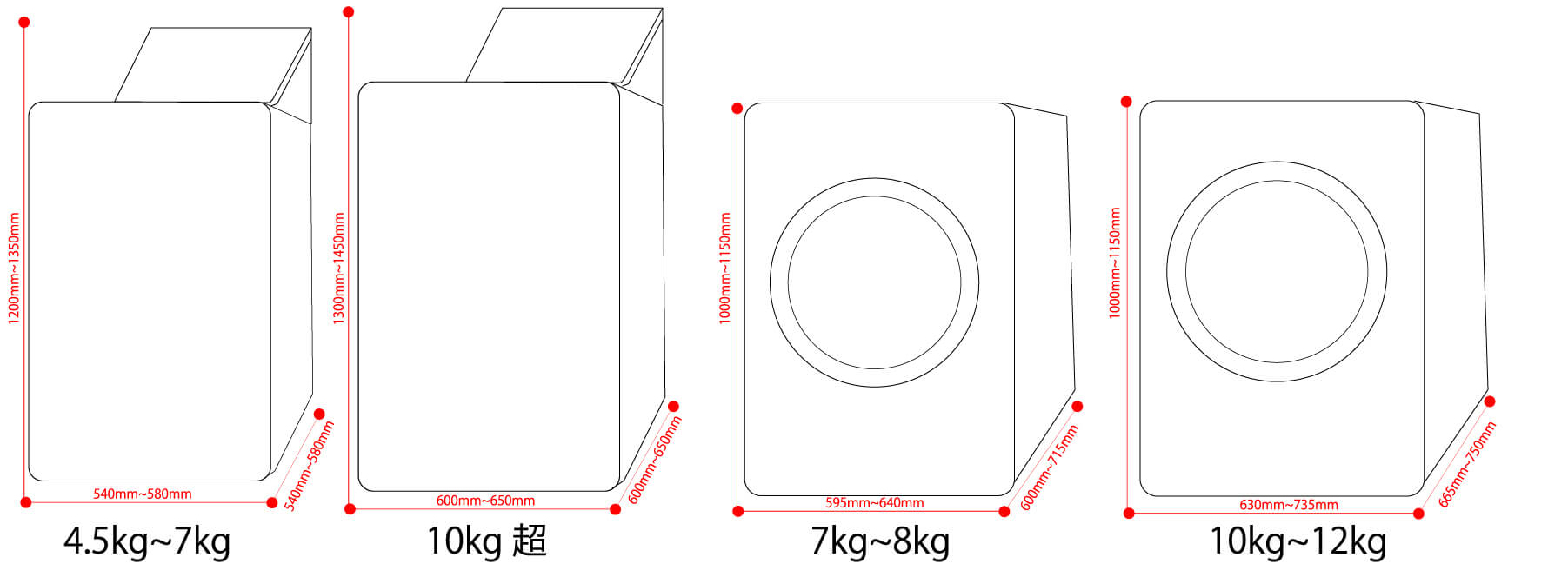
If the width of the washing machine space is shorter than 600mm, it may only accommodate vertical washing machines with a capacity of 5kg. For those requiring a drum-type washing machine, it's advisable to inform the real estate agent of this requirement before selecting a property.
Even slim drum-type washing machines have a minimum width of around 600mm. Since you'll want at least 50mm of space on each side to prevent a tight fit against the wall, a width of 700mm or more is preferable. Start by purchasing a slim drum machine to gauge the size and conduct meticulous measurements on-site.
Even if the width and depth are adequate, the height to the water supply inlet may pose an issue. Especially with types featuring faucets, the length of the faucet can impact the installation. While the height of washing machines varies by manufacturer, ensure to measure it accurately. For vertical washing machines, consider the additional height when the lid is open. We've included a rough estimate of the height when the lid is open in the table above, so please refer to it.
This is often overlooked, but the direction in which the lid of a drum-type washing machine opens is crucial. While it's not an issue if the washing machine area can be placed frontally, if it's placed sideways, the direction of the lid's opening can significantly affect ease of access to load laundry.

This is a crucial but often overlooked aspect. When bringing an existing washing machine, be mindful of the layout selection, and when purchasing a new one, ensure to check thoroughly before buying.
Finally, let's explain other things to be careful about in the laundry machine space of rental properties.
Actually, a quite common issue is the absence of an "elbow". You might not be familiar with the term "elbow", but it refers to the "L-shaped" pipe attached to the waterproof pan or drainage outlet in the laundry machine area.
An elbow is essential where there's a drainage trap. It's attached to the laundry machine's drainage hose, connecting to the drainage gutter to prevent water leakage and ensure the proper operation of the drainage trap. A drainage trap utilizes the structure of the drainage outlet to prevent odors and foreign objects from rising up the pipes.
Since it's something attached to the laundry machine's drainage hose, the previous tenant might have taken it when moving out. As the elbow is part of the equipment, contact the real estate agent or landlord to have them provide one.
However, in older properties, especially those with many years since construction, there might be no drainage trap, and the water might directly flow into the drainage outlet. In such cases, where there's no drainage trap, there's a higher risk of odor issues emanating from the drainage outlet. If there's no elbow, also check if there's a drainage trap. If there isn't, you can improve the situation by purchasing and installing an elbow with a drainage trap.
Elbows can be purchased at home depot or online.
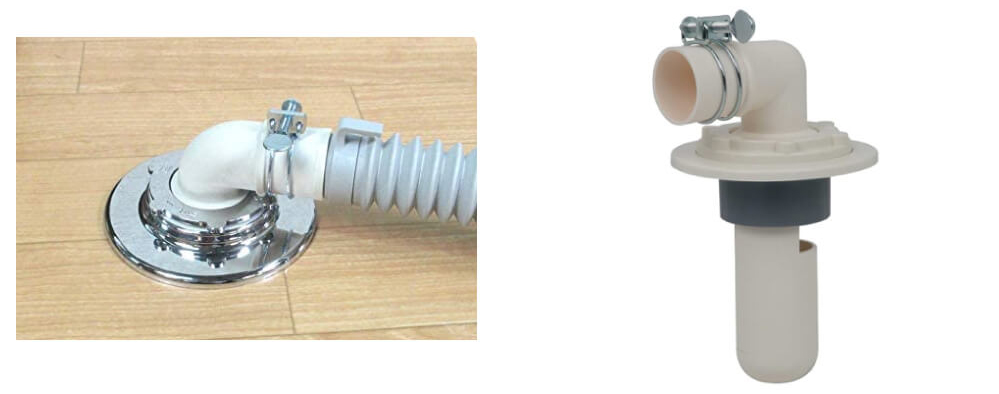
Image reference: AMAZON Washing Machine Elbow
In the explanation, there were photos of properties without a waterproof pan. In rental property laundry areas, it's common to find no waterproof pan. This serves three purposes: (1) preventing water leakage and condensation, (2) reducing vibrations and noise, and (3) making cleaning and maintenance easier.
Regarding (1), since the waterproof pan prevents water leakage within itself, it's not a significant issue. However, for (2) and (3), it's better to be prepared.
An effective item for both reducing vibrations and facilitating cleaning and maintenance is a stand for raising height (Washer Riser Platform) pan. If you have the budget, purchasing one with casters will greatly assist during cleaning. They can be purchased for around 3,000 yen. There are also it without casters made of vibration-absorbing rubber. They are recommended not only for properties without it but also for properties with flat-type waterproof pans, as they help reduce vibration and make cleaning easier.
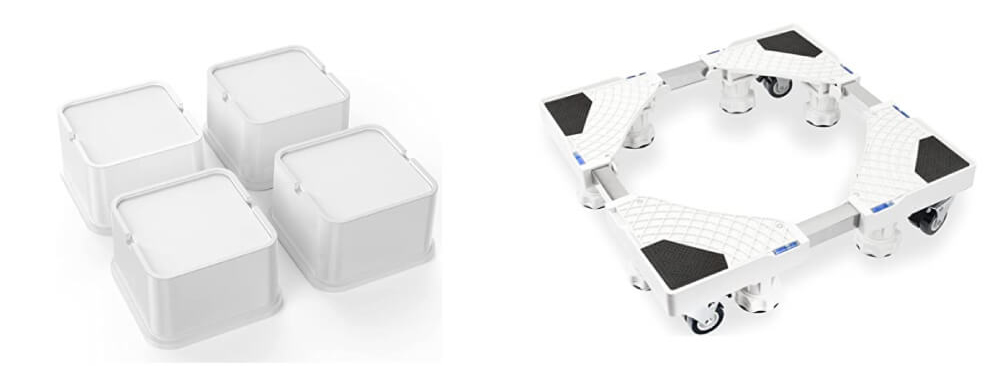
Image reference: AMAZON a stand for raising height (Washer Riser Platform) pan
There is a pattern of points to note when storing washing machines, such as not knowing the water supply mechanism. In many rental properties, there's either a nipple for water leakage prevention or an adapter for the faucet. However, these might have been taken by the previous tenant when moving out. In such cases, ask the real estate agent to have the landlord install a water supply adapter for laundry machines. Sometimes, you might be asked to cover the cost of installation. If that's the case, for new purchases, request installation upon delivery, and for previously owned ones, ask the moving company to handle it.
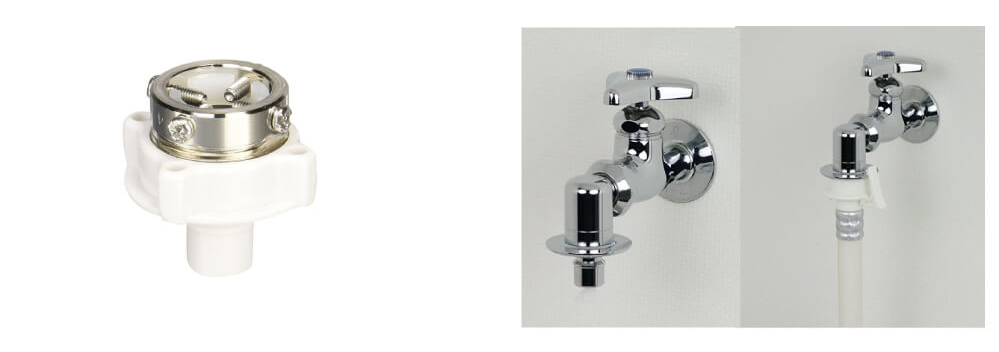
Image reference: AMAZON Washing Machine Faucet Adapter
Finally, those considering installing a drum-type washing machine need to be especially cautious. Although there's sufficient space in the laundry machine area, problems might arise when trying to move it in. Issues such as properties without elevators, stairs that can't accommodate large appliances, or doorways that are too narrow are quite common.
When making a new purchase, some home appliance stores offer services to check if delivery is possible. Drum-type washing machines are expensive products. Always make sure to have them checked in advance.
External link: Yodobashi Camera: About requesting installation estimates
That was the article about how much space is needed in rental property laundry machine areas and what to watch out for viewing.
The laundry machine area in rental properties is surprisingly prone to mistakes for size. The most important thing is to carefully check the size by referring to the manual if you're bringing your own washing machine. If you're purchasing a new one, first decide whether it's a drum-type or vertical-type machine, then pick the desired product and note down the size.
When you've narrowed down your property selection, always make precise measurements to ensure installation is possible. For drum-type washing machines, some home appliance stores offer services to check if installation is possible. Since these machines often cost over 200,000 yen, be sure to have them checked beforehand.
If you're looking for rental properties along the Tokyu Line, don't hesitate to contact BALLEGGS. Experienced staff will provide thorough support for your laundry machine area needs, including measurements!
Thank you for reading until the end.

